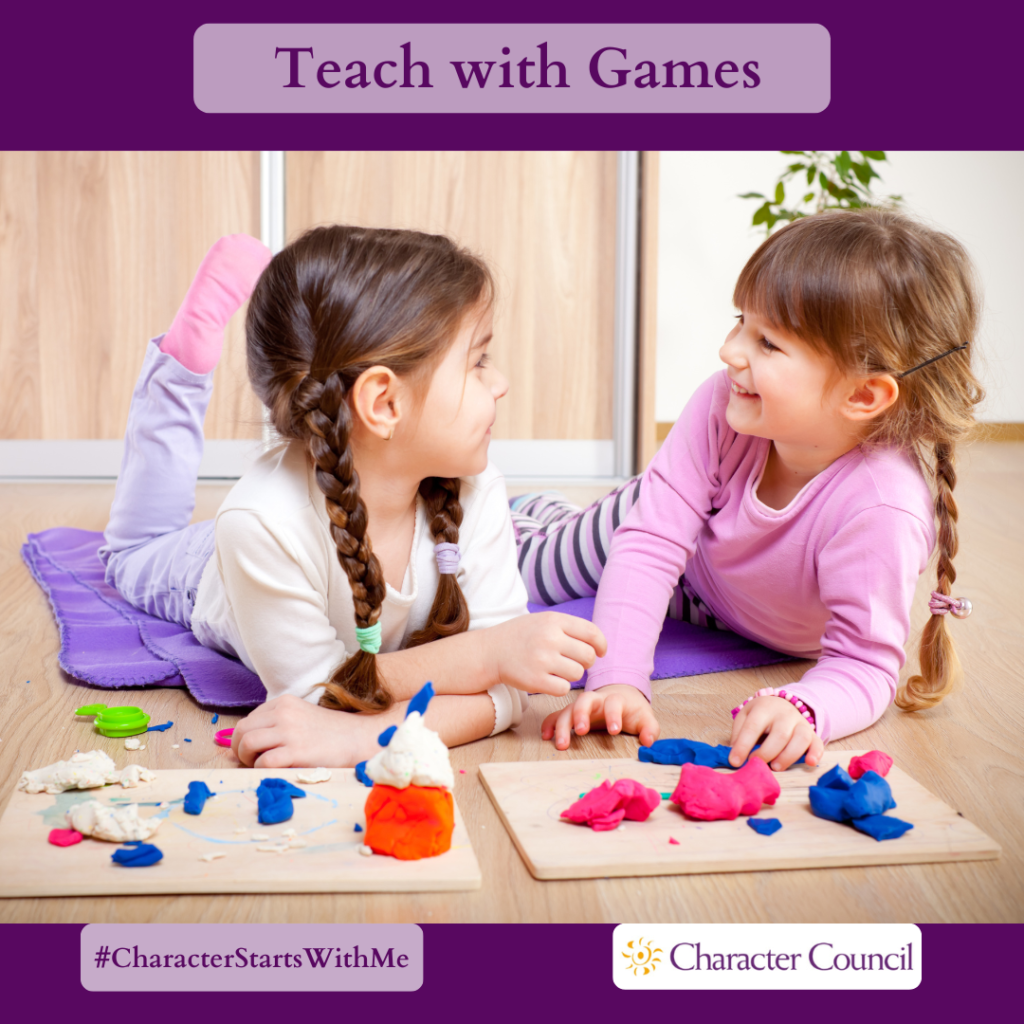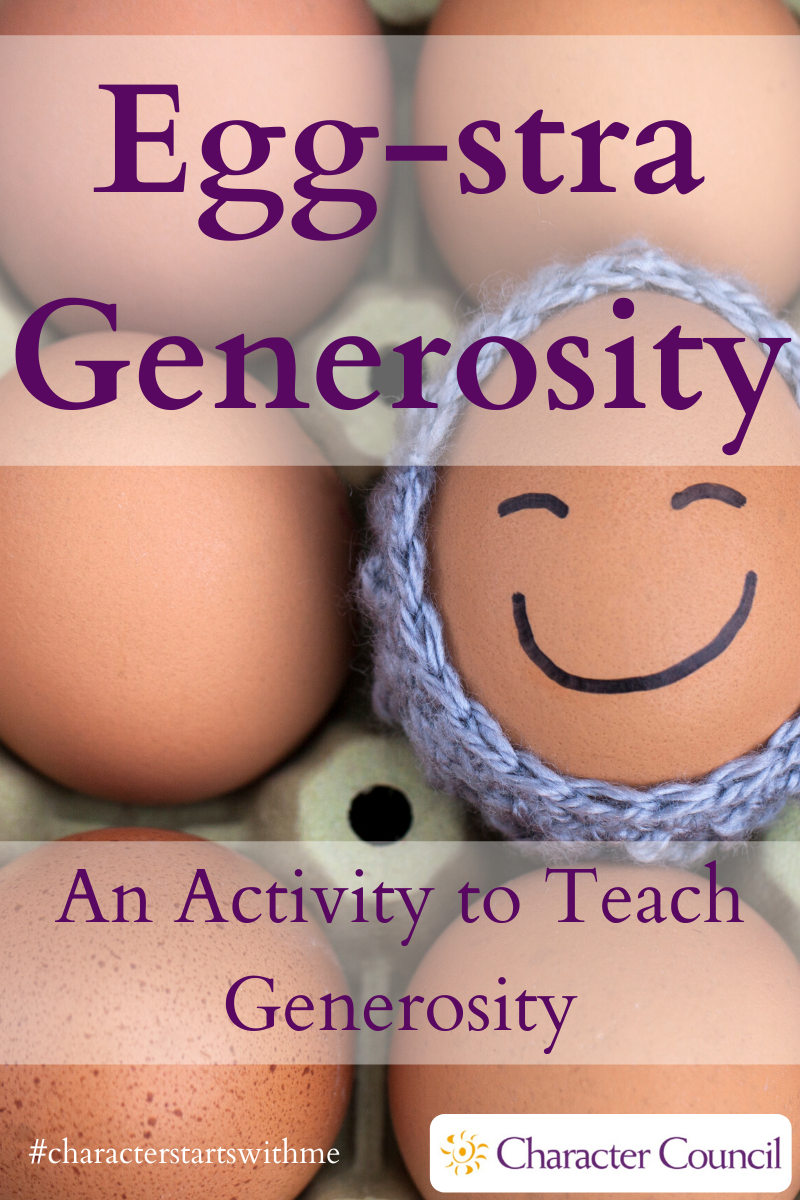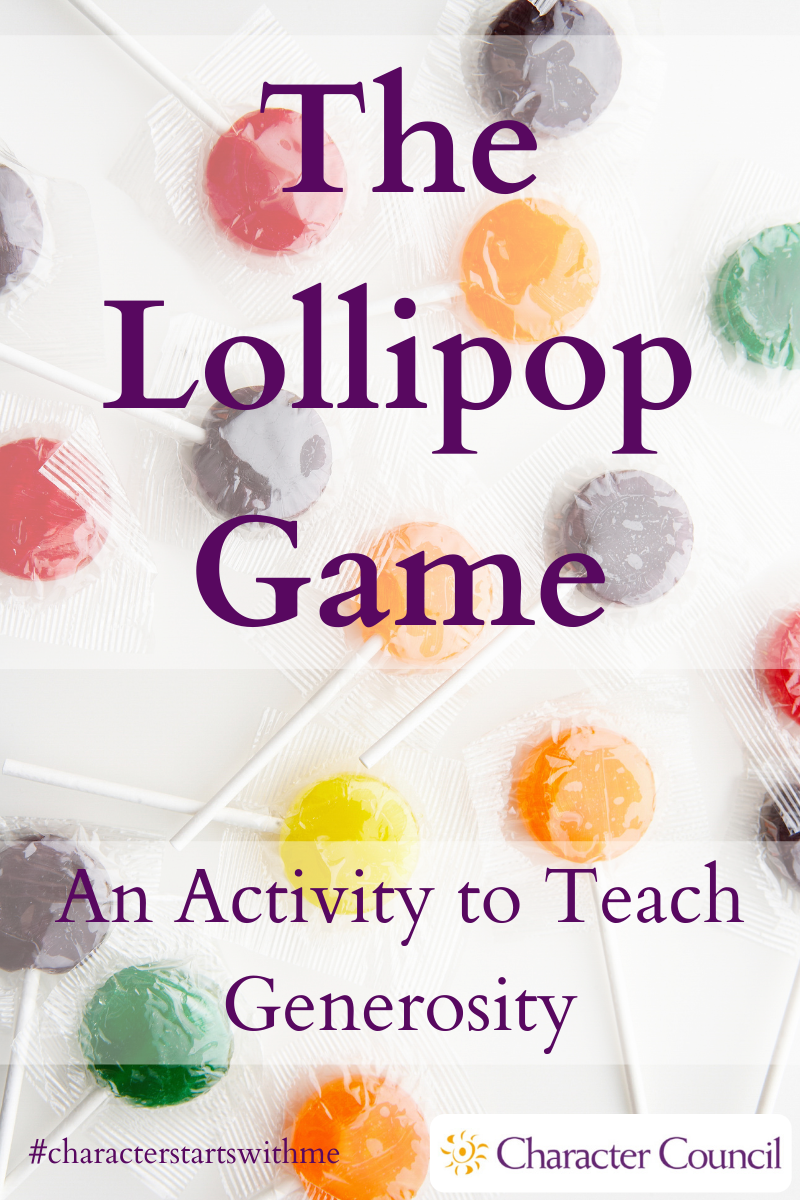
Generosity Activities
The activities here are fun ways to teach character. The game aspect makes the lesson more memorable. Each activity has processing questions at the end. Without processing the activity, the exercise is just a game. To make it a stronger lesson when you process it, relate the character quality to a core value that your organization promotes.
Consider picking a student to run the activity. You will need to give them time ahead of the activity to prepare. Another option is to pick a few students to run the activity for a younger classroom after you have run it for your class. Encourage your students to repeat it in the home for younger siblings or even parents.


Egg-stra Generosity
You will need a clear container with enough water to completely cover an egg, and then some. The container should be wide enough that you can remove the egg with your hand. Gently place the egg in the water and watch it sink. Discuss with the class, that this is how a sad person feels who is need of our generosity. Discuss ways you could make this classmate feel better. What things could you say or do with that person? (share, let them go first, lend a pencil or paper, give a compliment, offer to partner or sit with them at lunch) Be sure to identify class behaviors that could have led to someone feeling so down. Once you have created a list of generous things to do, remove the egg and begin to stir in salt. You will need 1/4 cup salt for every cup of water in the container. With each spoonful that you put in, name one of the suggestions that the class gave earlier. Stir the water after every spoonful. Once all the salt is stirred in, place the egg in the water. It should now float. Explain that the egg is now being supported by the generosity of their classmates.
To process this activity, ask these or similar questions:
- Did you think we would get the egg to float?
- Have you ever floated in salty sea water?
- What kind of culture would we have if we were kind and generous with our classmates?
- What kind of “water” do you want to be surrounded with?
- What kind of “water” do you want to be?

BE GENEROUS WITH YOUR TIME
Discuss what it means to ‘give time’ with your students. These activities should only require that you spend time with someone. This could be reading to a younger sibling or playing cards with an aging relative. The focus should be on spending time WITH someone. This is not the time for doing chores for someone.
Time is also required if you are trying to conserve your resources. It takes a few extra minutes to rinse out a can and put it in the recycle bin rather than just tossing it in the trash. Conserving our natural resources and taking care of the environment is being generous to future generations.
For one of the weeks of this month challenge your students to find ways to give of themselves by giving time.
BE GENEROUS WITH YOUR TALENT
Discuss what it means to ‘give talent’ with your students. These activities should focus on doing a task or chore for someone or for a group. It could be volunteering for a church or community activity or it could be doing something for a family member or neighbor.
Another way to be generous with your talent is to find something that you do well and share it with someone else. For example, if you have skills in soccer, perhaps you could do drills with a younger soccer player. If you can sing, you can organize a neighborhood caroling adventure or perform for a nursing home. If you are good at reading or math, there are always younger students who could benefit from a tutor.
For one of the weeks of this month challenge your students to find ways to give of themselves by performing a job that benefits someone else.
BE GENEROUS WITH YOUR TREASURE
Discuss what it means to ‘give treasure’ with your students. It doesn’t always have to mean money. These activities should focus on the giving of something. You can organize a drive to collect a specific item such as loaves of bread or new or used but usable mittens or socks and donate them to a local shelter. (It is much easier to coordinate a drive for specific item than it is to run a food or clothing drive.)
If your school already has a clothing, food, or toy drive in place, beef up that activity by having students write short notes to the people that will receive the items and attach the notes to the items. Once the items are collected, pick out a few to use as an example. Have the students imagine the people that their things will go to, and how happy these people will be to receive them. Create a fictitious character and a story about the items.
To process this activity, ask these or similar questions:
- Did you realize how many different ways there were to be generous?
- Have you done some of these things before without realizing it was generosity?
- How did it feel to be generous?
- How does it feel to give to those who are not as lucky as you?
- What will you do the next time you notice someone in need?
- Will you look for all the ways you can be generous in the future?

The Lollipop Game
You will need to choose a candy, such as a Dum-Dum lollipop or smarties or something that everyone can have then name the game for whatever you choose. It doesn’t even need to be the same treat for all. You will need to print the instruction cards. Please modify the list to suit your class. Each student is instructed to take a treat and a card, and then give it to someone based on the instructions. The person who gets the treat is the next one to pick. Each student should only get one treat. Once a student reads the instructions, you may ask those who qualify to raise their hand. If nobody qualifies, they can choose another card. You may want to have a few more than the number in the class in case the last few instructions don’t match the students remaining or make sure that the most generic ones are at the bottom. If you do have students with special dietary needs, you can substitute their treat when they are chosen. An alternate to the game, is to have a student pick a treat and then you read from the list who they are to give it to. When everyone has a treat, then they can all eat it.
To process this activity, ask these or similar questions:
- Did you like the name of the game when you heard it?
- Is it fun to get a treat?
- Was it hard to pick someone to give to?
- Did it feel good to give a treat away?
- In this game, everyone gets a treat. Do you think it would be hard to give it away if you didn’t know if you were going to get one?